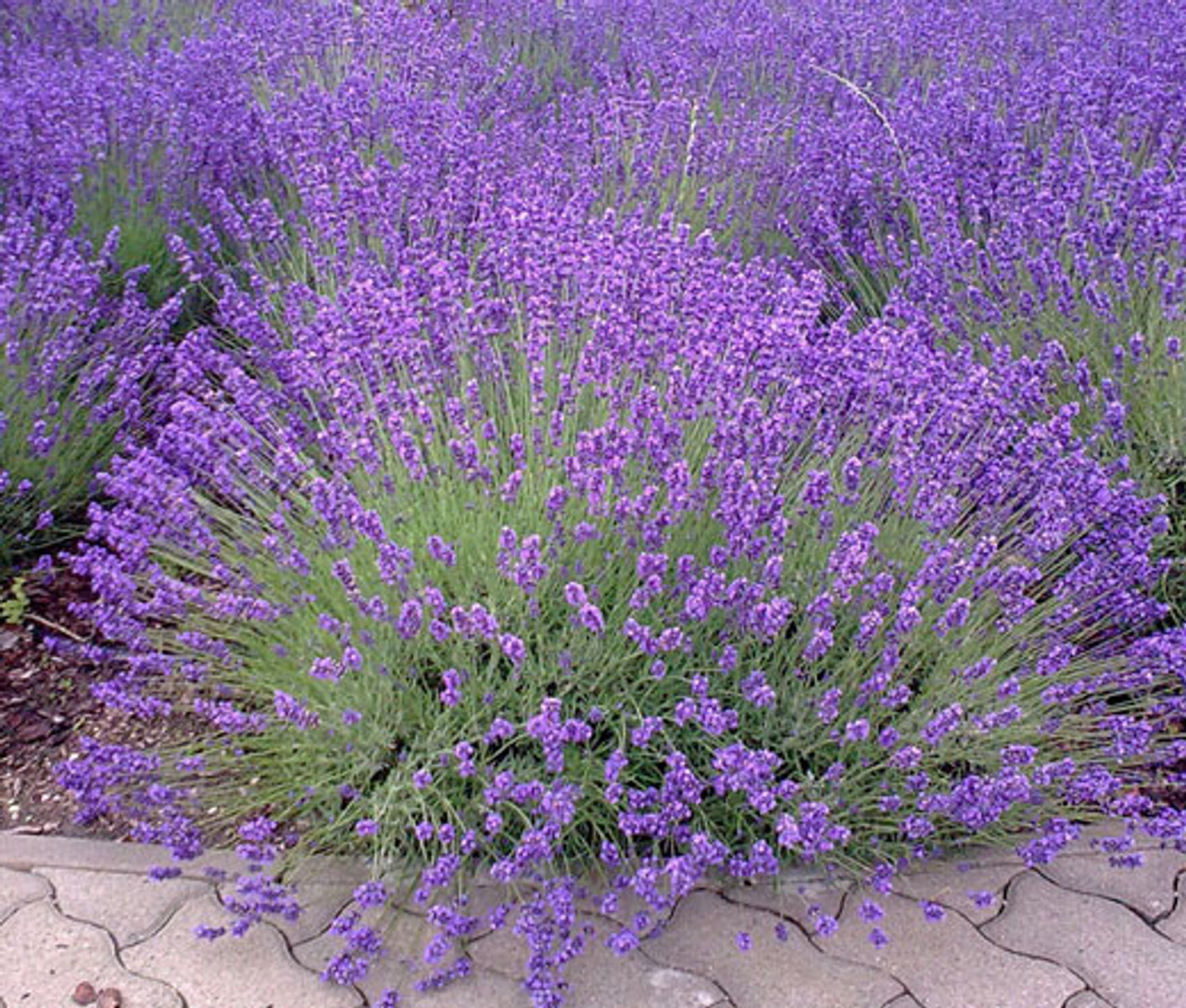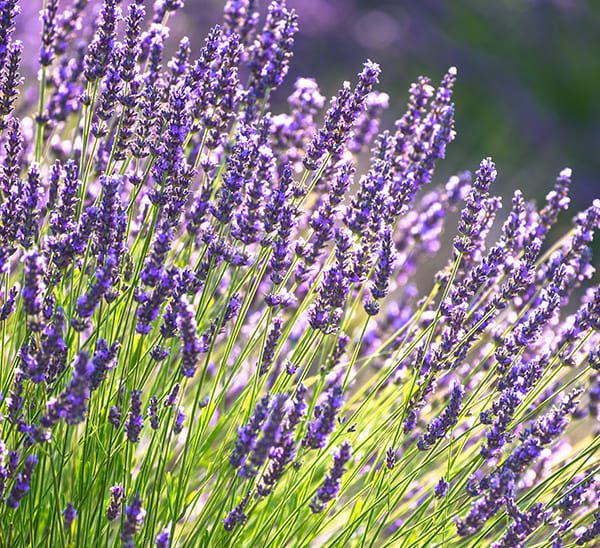Annuals vs. Perennials: A Brief Overview
Annuals and perennials are two main categories of plants, each with distinct growth habits and life cycles. Annuals, such as marigolds and zinnias, complete their entire life cycle within a single year. They germinate, flower, produce seeds, and die within that timeframe. In contrast, perennials, like lavender, rosemary, and hostas, live for more than two years. Perennials often go dormant during the colder months and regrow in the spring, offering a longer-lasting presence in the garden.
Understanding the growth habits of plants, including whether lavender is an annual or a perennial, is crucial for gardeners and enthusiasts. Proper care and maintenance, such as watering, pruning, and fertilizing, can significantly differ between annuals and perennials. By recognizing the unique needs of each plant type, gardeners can create thriving, beautiful landscapes that evolve and flourish over time.
Lavender: Understanding Its Growth Habits
Lavender, a beloved plant known for its captivating appearance and soothing scent, is generally considered a perennial. However, some lavender varieties may behave as annuals depending on the climate and conditions in which they are grown. This versatility allows lavender to be enjoyed by gardeners in various regions and environments.
Perennial lavender varieties, such as English lavender (Lavandula angustifolia), are hardy and can live for several years with proper care. These varieties typically thrive in USDA hardiness zones 5 through 9, depending on the specific cultivar. English lavender is prized for its compact growth habit, abundant flower production, and cold tolerance.
On the other hand, Spanish lavender (Lavandula stoechas), also known as French lavender, is a tender perennial or annual, depending on the climate. Spanish lavender is more heat-tolerant and drought-resistant than English lavender, making it an excellent choice for gardeners in warmer regions. In colder climates, Spanish lavender is often grown as an annual or overwintered indoors.
By understanding the growth habits of different lavender varieties, gardeners can make informed decisions about which types to cultivate in their gardens and how to care for them properly. This knowledge ensures that lavender plants, whether perennial or annual, can be enjoyed for their beauty and utility in various forms.
Cultivating Lavender: Tips for Success
Regardless of whether lavender is grown as an annual or perennial, following a few essential cultivation tips can help ensure its health and longevity. By providing the proper soil conditions, sunlight, water, and care, lavender plants can thrive and contribute to the beauty of any garden.
First, consider the soil conditions when cultivating lavender. Well-draining soil is crucial, as lavender does not tolerate wet or waterlogged conditions. Amend heavy soils with sand or gravel to improve drainage. A slightly alkaline soil pH, between 6.7 and 7.3, is ideal for lavender growth.
Next, ensure that lavender plants receive full sun, as they require at least six hours of direct sunlight each day. This sun exposure helps promote compact growth, abundant flowering, and strong fragrance. In hot climates, provide some afternoon shade to protect lavender from excessive heat.
When it comes to watering, less is more for lavender. Water the plants deeply but infrequently, allowing the soil to dry out between waterings. Overwatering can lead to root rot and other fungal issues, which can negatively impact the plant’s health.
Lastly, regular pruning and deadheading are essential for maintaining the health and appearance of lavender plants. Prune lightly in the spring after the danger of frost has passed, removing any dead or damaged wood. Deadhead spent flowers throughout the growing season to encourage repeat blooming and prevent the plant from becoming leggy.
By following these cultivation tips, gardeners can successfully grow lavender, whether it is an annual or perennial, and enjoy its many benefits in their landscapes and gardens.
Lavender Hardiness Zones: Know Your Climate
Understanding USDA hardiness zones is crucial for gardeners when determining whether lavender is an annual or perennial in their region. Hardiness zones are based on the average annual minimum winter temperature, divided into 10-degree Fahrenheit increments. By knowing the hardiness zone for a specific location, gardeners can make informed decisions about which lavender varieties to grow and how to care for them properly.
Most lavender varieties, including English lavender, are hardy in USDA zones 5 through 9. These perennial plants can survive cold winters, provided they are given proper care and protection. Spanish lavender, a tender perennial or annual, is more heat-tolerant and thrives in warmer climates, typically in USDA zones 8 through 11.
Gardeners in colder climates, where lavender is not typically hardy, can still enjoy lavender as annuals or by using protective measures. Planting lavender in containers allows for easy overwintering indoors or in a protected area. Applying a thick layer of mulch around the base of lavender plants can also provide insulation and help protect the roots from freezing temperatures.
By understanding the hardiness zones and the specific needs of various lavender types, gardeners can successfully cultivate and enjoy lavender, regardless of whether it is grown as an annual or perennial.
Popular Lavender Varieties and Their Growth Habits
When considering whether lavender is an annual or perennial, understanding the unique characteristics of various lavender varieties can help gardeners make informed decisions. Here are some popular lavender varieties and their growth habits:
Hidcote
Origin: Developed in England
Appearance: Compact, mounded form with deep purple flowers
Care requirements: Thrives in full sun and well-draining soil
Growth habit: Perennial, hardy in USDA zones 5 through 9
Grosso
Origin: France
Appearance: Erect, silvery foliage with lavender-blue flowers
Care requirements: Prefers full sun and well-draining soil
Growth habit: Perennial, hardy in USDA zones 6 through 9
Provence
Origin: France
Appearance: Tall, upright growth habit with light purple flowers
Care requirements: Requires full sun and well-draining soil
Growth habit: Perennial, hardy in USDA zones 6 through 9
French Lavender (Lavandula stoechas)
Origin: Mediterranean region
Appearance: Characterized by distinctive bracts resembling rabbit ears
Care requirements: Prefers full sun and well-draining soil
Growth habit: Tender perennial or annual, depending on the climate
By understanding the unique characteristics of these popular lavender varieties, gardeners can make informed decisions about which types to grow and how to care for them properly, whether they are annuals or perennials.
How to Overwinter Lavender: Ensuring Perennial Survival
When growing lavender as a perennial, it is essential to provide proper care during the winter months to ensure its survival. Here are some techniques for overwintering lavender in colder climates:
Mulching
Applying a thick layer of mulch around the base of lavender plants can provide insulation and help protect the roots from freezing temperatures. Use organic materials such as straw, leaves, or wood chips, applying a 2- to 4-inch layer after the ground has frozen.
Protecting from Frost
In regions with harsh winters, consider using frost protection measures such as frost blankets or row covers. These materials can help trap heat and protect lavender plants from extreme cold and frost damage.
Reducing Watering
During the winter months, reduce watering to prevent root rot and other fungal issues. Allow the soil to dry out between waterings, and only water when the temperature is above freezing.
Pruning
Prune lavender plants in late summer or early fall, removing any dead or damaged wood. This pruning helps promote compact growth and encourages the plant to produce new, healthy growth in the spring.
By employing these overwintering techniques, gardeners in colder climates can successfully grow lavender as a perennial, ensuring its survival and continued health and beauty in their gardens.
Extending Lavender’s Life: Preservation Techniques
While lavender can be enjoyed as both an annual and a perennial, depending on the variety and climate, there are various methods for preserving lavender to extend its usefulness and enjoyment beyond its natural growth cycle. These techniques are valuable for both annual and perennial lavender growers.
Drying Lavender
Drying lavender is a simple and effective way to preserve its beauty and fragrance. To dry lavender, gather stems in bundles, tie them together, and hang them upside down in a dark, dry, well-ventilated area. Once the lavender is completely dry, remove the flowers from the stems and store them in airtight containers.
Using Essential Oils
Lavender essential oil is extracted from the plant’s flowers and leaves through a steam distillation process. This oil can be used in various applications, such as aromatherapy, skincare, and household cleaning products. By growing and harvesting lavender, gardeners can create their own essential oils, ensuring a consistent supply of high-quality, chemical-free products.
Creating Crafts and Decorations
Dried lavender flowers can be used to create an array of crafts and decorations, such as sachets, wreaths, and potpourri. These items make lovely gifts or add charming touches to home décor.
By exploring these preservation techniques, lavender enthusiasts can extend the enjoyment of this versatile plant, regardless of whether it is grown as an annual or perennial.
Embracing Lavender: Annuals, Perennials, and Beyond
Understanding the growth habits of lavender, whether it is an annual or perennial, is crucial for gardeners and enthusiasts alike. By recognizing the unique characteristics of various lavender types and employing proper cultivation techniques, one can fully appreciate the beauty and utility of this versatile plant.
Lavender, in general, is typically considered a perennial, gracing gardens with its attractive appearance and soothing scent for several years. However, some varieties, like Spanish lavender, may behave as annuals depending on the climate and conditions. Embracing lavender’s diverse growth habits allows gardeners to enjoy this plant in various forms, tailoring their cultivation methods to their unique environments and preferences.
By providing optimal soil conditions, sunlight requirements, and watering needs, gardeners can successfully cultivate lavender, whether it is grown as an annual or perennial. Regular pruning and deadheading promote plant health and longevity, ensuring that lavender continues to thrive and contribute to the beauty of any garden.
For those in colder climates, understanding USDA hardiness zones and employing protective measures, such as mulching and frost protection, can help ensure lavender’s survival as a perennial. Alternatively, gardeners can still enjoy lavender as annuals, appreciating its beauty and utility for a single growing season.
Beyond its growth habits, lavender offers a wealth of opportunities for preservation and enjoyment. Drying lavender flowers, creating essential oils, and crafting decorations are just a few methods for extending lavender’s usefulness and appreciation beyond its natural growth cycle. These techniques are valuable for both annual and perennial lavender growers, allowing them to enjoy this charming plant year-round.
In conclusion, lavender can be enjoyed as both an annual and a perennial, depending on the variety and climate. By understanding its growth habits and employing proper cultivation techniques, gardeners and enthusiasts can appreciate the diverse world of lavender and all it has to offer.






